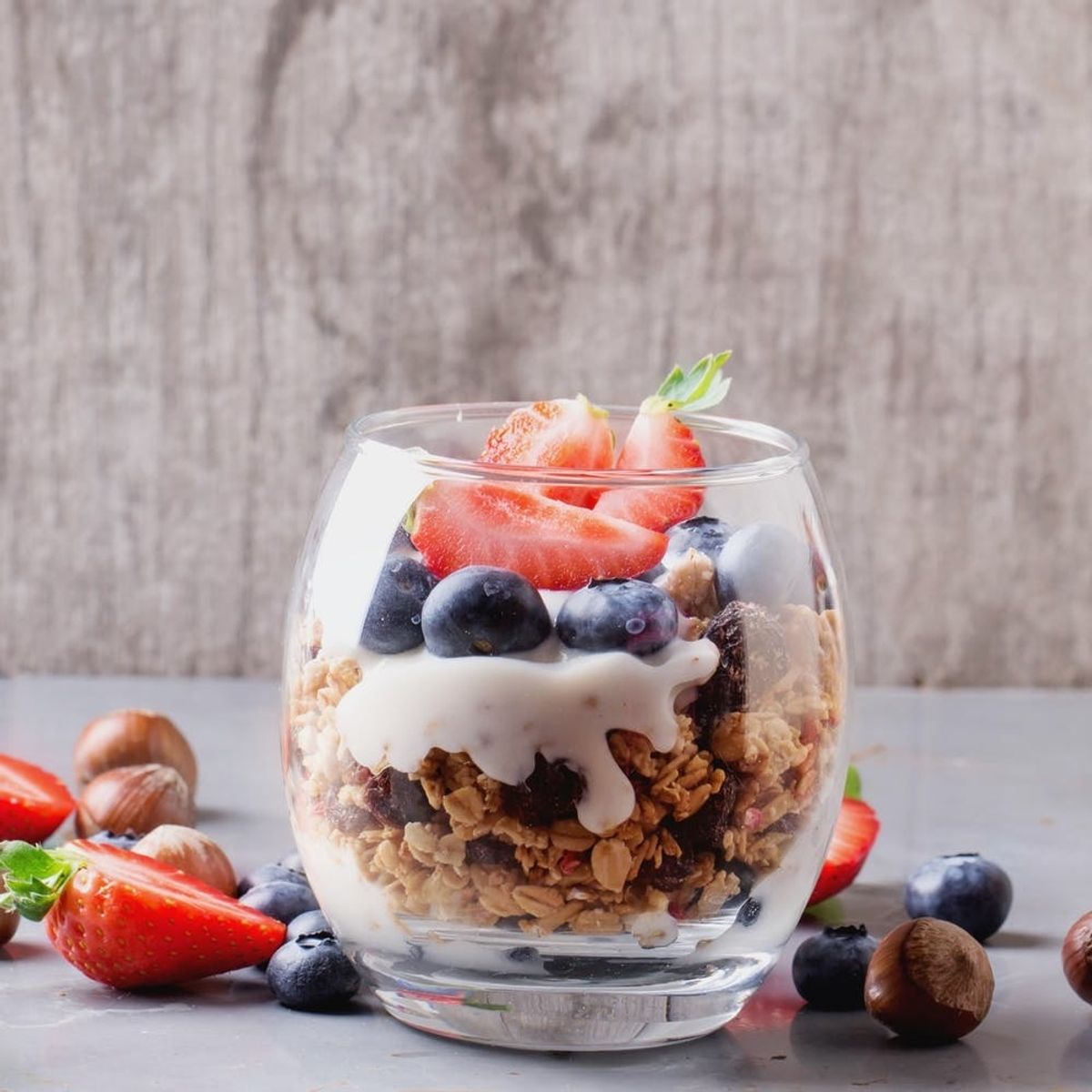We’re banking on a healthy post-holiday season.
This Super Simple Trick Will Curb Your Sugar Cravings


For many of us, 2017 was a doozy, but we here at Brit + Co are ready to hit refresh in 2018! Follow our Hit Refresh series through January for new ideas, hacks, and skills that will help you achieve (and maintain!) those New Year’s resolutions.
New year, new you — or something? Whether you’re all about sticking to traditional resolutions or you’ve taken an alternative resolution approach this year, the yearly calendar turnover is a chance to refresh. We set financial goals, make romantic resolutions, focus on fitness — and often give in to a diet trend (or two). We’re not knocking diets here, but (spoiler) we’ve found that maintaining consistent, realistic eating patterns is the best way to healthy (vegan lunch meet homemade marshmallows).
And Paddy Spence, CEO of Zevia, is on board the “it’s all about balance” train. Spence has been in the natural food industry for over 25 years and cut added sugar out of his own diet 17 years ago. To help his family keep the sugar demons at bay, he came up with a “sugar budget” as a way to regulate sweet “overspending.” Below, he fills us in on how to start our own sugar budgets, and tells us the tricky ways added sugar sneaks into our systems.

Sugar budget basics
First, Spence recommends keeping a food journal during your first week of sugar budgeting. It’s a simple way to see exactly where you’re getting most of your sugar and pinpoint habits that may lead to sugary snacking through the day. Spence says that “beverages are the first place people should look to when it comes to cutting sugar, because on average, 47 percent of Americans’ added sugar intake comes from beverages. In fact, drinking just one sugary soda per day adds up to 32 pounds of sugar per year!”
In his family, he explains, “We use a budget of 50 grams of sugar per day to “spend” however you like. That’s 10 percent of a 2000-calorie-a-day diet, and sugar is four calories per gram, meaning you limit your intake to 200 calories from sugar per day.” You can tailor this budget to your own dietary needs and caloric intake, which a certified dietitian can help you figure out. Of course, there will be days you’ll be under and others you’ll go over, like with “any budget you’re striving to maintain,” but if you’re accounting for these totals, no worries.
Take your cues from the kids
Spence’s six and eight-year-old daughters have become “sugar detectives,” reading labels at the grocery store with their parents. He explains that they’ll compare, say, a juice box to applesauce squeeze snacks or ice cream and determine where they want to spend their budget. No surprise — the ice cream usually wins, but “it empowers them to make choices,” Spence explains, and has even cut down on their sugar cravings altogether.
A sugar budget isn’t about denying yourself food that make you happy — it’s just a matter of prioritizing which of those treats you want most. And right now we want stuffed cookies.
Give me some sugar
Not all sugar is created equal, and Spence reminds us, “Even though they add to your sugar budget, whole fruits offer fiber and other good-for-you ingredients, such as vitamins that actually slow the absorption of sugar. Fruit juice and dried fruit, on the other hand, are sugar-concentrated versions of the real thing.”
Additionally, he suggests combating your sugar cravings by reaching for high protein snacks. He says his family “loves turkey jerky or stevia-sweetened Greek yogurt because it fills you up without the eventual energy crash.”
3 Secret Sugar Offenders
1. Condiments: “There’s a reason kids love ketchup — it’s one of the sugariest condiments, and barbecue sauce is just as bad. But perhaps the sneakiest of the lot, however, is salad dressing — especially fat-free varieties. The best way to control sugar content is to make your own dressing.” No problem there — we have so many homemade salad dressing recipes we love.
2. Coated Snacks: “Honey-roasted nuts, flavored jerky, and yogurt-covered pretzels often run neck-and-neck with candy bars for sugar content. Opt for the naked versions,” instead.
3. Cereal: Yes, even granola. Spence reminds that a cereal doesn’t have to be frosted or chocolate-flavored to be sugary, and warns not to be “fooled by seemingly healthy options.” Our advice? Read the label before buying. Or, you know, make your own!
Will you try a sugar budget in the new year? Tweet us @BritandCo and tell us what you think!
(Photo via Getty)


















